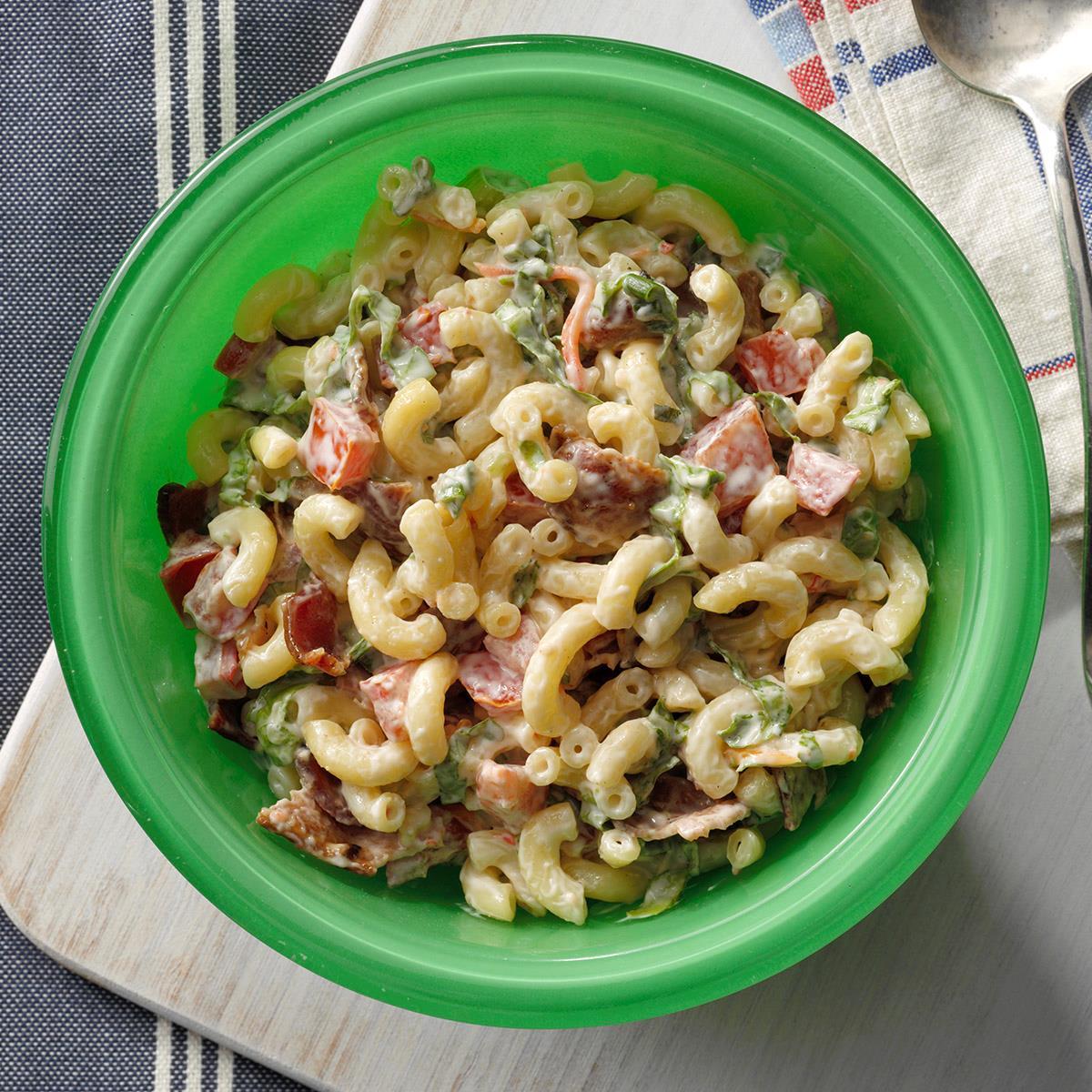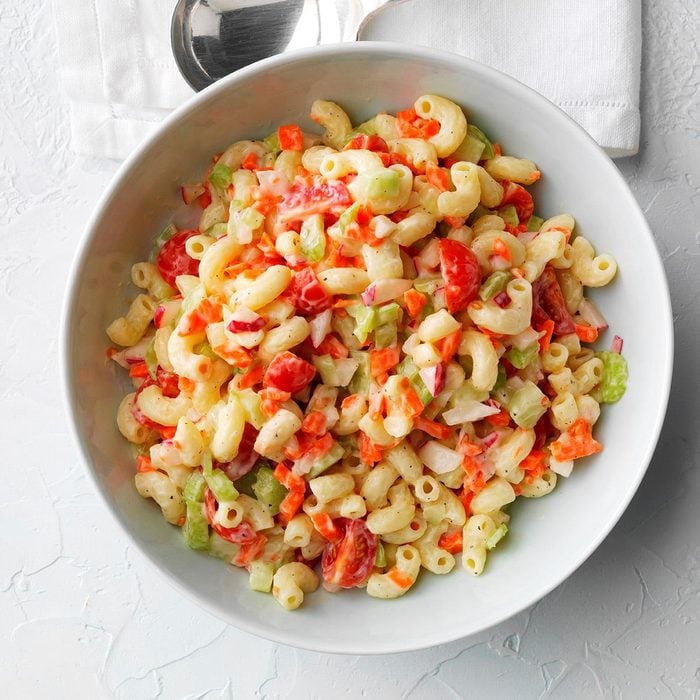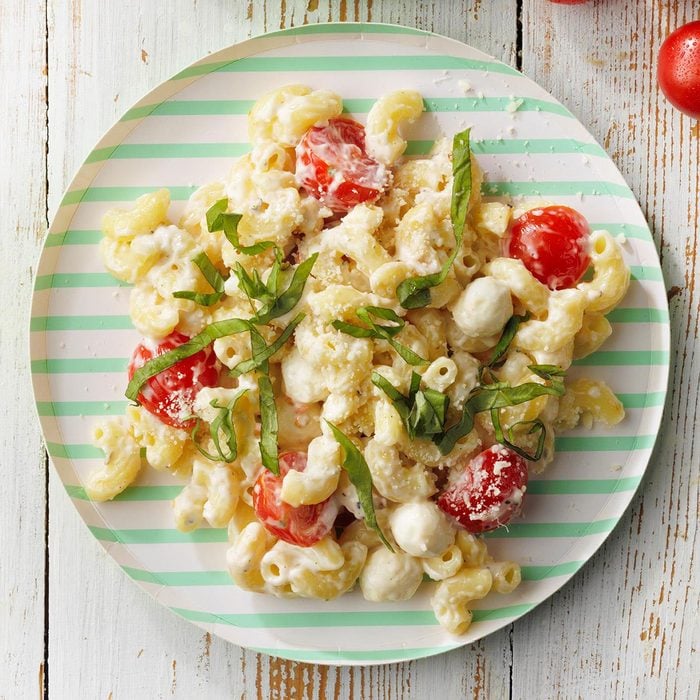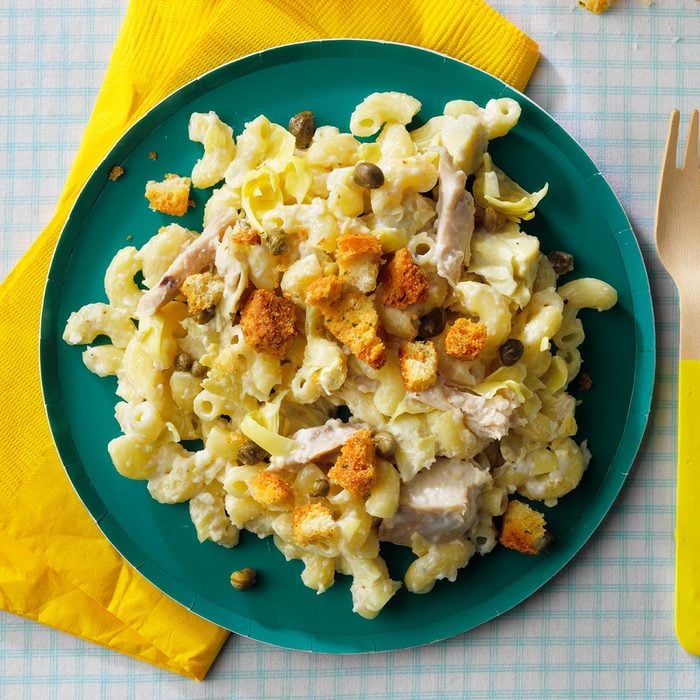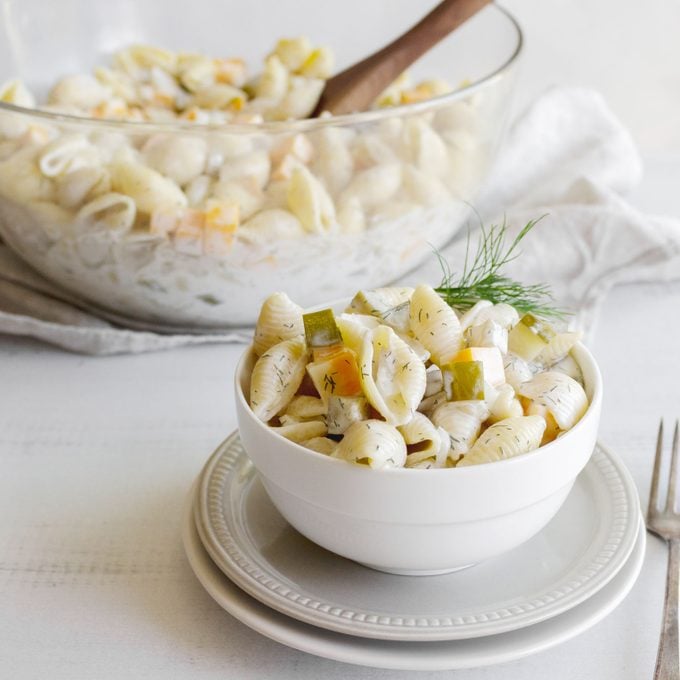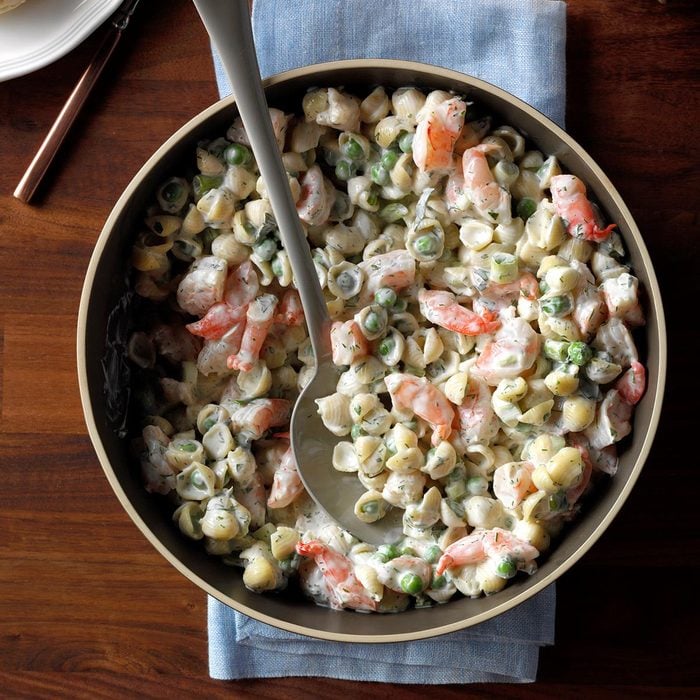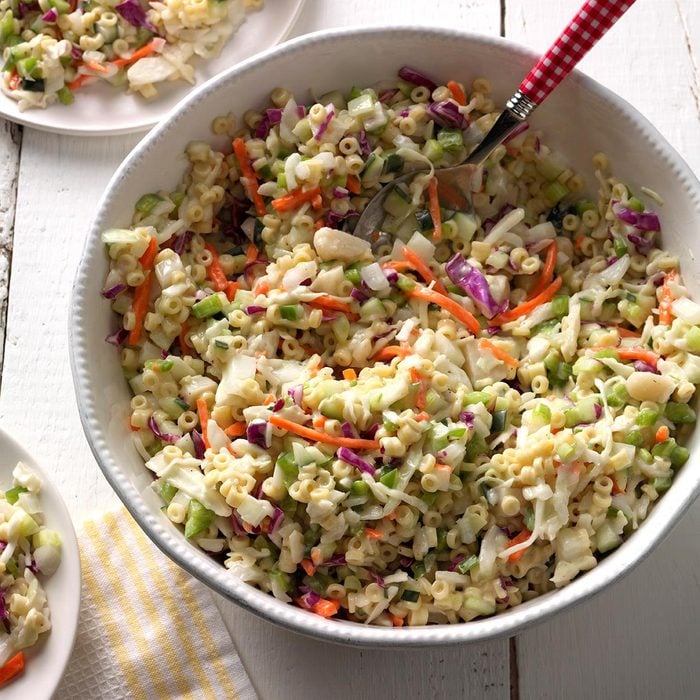Mayonnaise might be the most versatile condiment on the planet. It’s responsible for some of our favorite homemade salad dressings and an essential component of a good BLT. In fact, there are all kinds of surprising uses for mayonnaise, like making a golden, crispy grilled cheese or a moist chocolate cake.
Miracle Whip isn’t just a specific brand name of mayonnaise; it’s actually a completely different product. So what’s the difference between mayonnaise and Miracle Whip? Are there any rules when it comes to substituting Miracle Whip vs. mayo?
What Is Mayonnaise?
 TMB Studio
TMB Studio
As the story goes, mayonnaise was invented in 1756 by a French chef who wanted to celebrate the Duc de Richelieu’s victory against the British. He ran out of cream, so decided to make his sauce with oil and eggs instead.
What he created was a delicious combination of fat and water held in suspension by an egg. The egg works like a magnet, bonding the fat from the oil and the liquid from the vinegar (or lemon juice). Unlike salad dressings that separate, the egg makes mayonnaise emulsified, giving it a thick, solid and spreadable consistency. It sounds complicated, but homemade mayonnaise is remarkably simple to make.
There are some rules, though: According to the U.S. Food and Drug Administration (FDA), anything labeled as “mayonnaise” must contain 65% vegetable oil by weight. Which brings us to the major difference between Miracle Whip and mayonnaise…
What Is Miracle Whip?
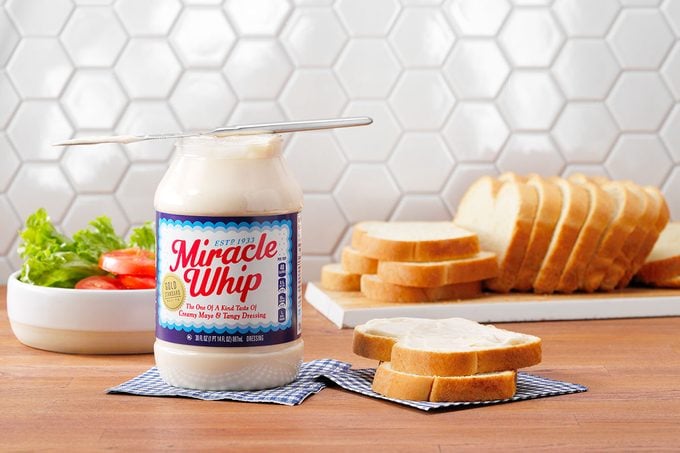 TMB Studio
TMB Studio
Miracle Whip was developed in 1933 as a cheaper alternative to mayonnaise. It has the same basic ingredients—eggs, oil and vinegar—but it also contains water, sugar and spices. That dilutes the condiment, reducing the amount of oil to less than 65%. Meaning, it’s not technically mayonnaise at all, and the FDA classifies it as a “dressing.”
The added sugar in Miracle Whip makes it perfect for recipes that benefit from sweet notes, like Amish macaroni salad or a sweet and tangy cucumber salad.
Miracle Whip vs. Mayo
Technicalities aside, the real difference between mayonnaise and Miracle Whip is all about flavor. Miracle Whip is usually described as sweeter and spicier than mayo, which some people prefer. Mayonnaise is richer, with a lightly sour taste and an eggy aroma.
They both have a similar creamy texture, and when it comes down to it, mayonnaise and Miracle Whip work the same in most recipes. Feel free to substitute equal parts Miracle Whip for any uncooked recipe that calls for mayonnaise (and vice versa), depending on your taste preferences.
If you’re baking or using mayonnaise to make a grilled cheese, use full-fat mayonnaise only. Save the reduced-fat or fat-free mayonnaise for a classic macaroni salad, and skip the Miracle Whip because anything other than full-fat mayo can separate and become greasy when exposed to heat. That means using Miracle Whip could lead to baking fails in cakes or other baked goods. It may not contain the right proportion of eggs or fat for the recipe, so experiment at your own risk!
Here’s the best mayonnaise according to our Test Kitchen.
Is Miracle Whip Healthier Than Mayo?
|
Full-Fat Mayo |
Miracle Whip |
| Calories |
90 |
40 |
| Fat |
10g |
3.5g |
| Carbs |
0g |
2g |
| Protein |
0g |
0g |
When it comes to nutrition, Miracle Whip contains about half the fat and calories compared to mayonnaise, so it’s often the go-to choice for those counting calories. That said, it’s sweetened with high-fructose corn syrup, and it contains more sugar than most brands of mayonnaise. It’s not the worst condiment for sugar content, but it’s there if you’re watching your intake.
Our Absolute Best Pasta Salad Recipes
BLT Macaroni Salad
A friend served this BLT pasta salad, and I just had to get the recipe. My husband loves BLT sandwiches, so this has become a favorite of his. It's nice to serve on hot and humid days, which we frequently get during summer here in Virginia. —Mrs. Hamilton Myers Jr., Charlottesville, Virginia
Go to Recipe
If you love
macaroni salad, you've got to try our other
pasta salad recipes!
Deviled Egg Macaroni SaladThis macaroni salad mixes the cooked egg yolks into the
mayonnaise dressing to give it that classic deviled egg taste. If there are other veggies you like, such as sweet red pepper or carrots, in your macaroni salad feel free to stir them in. —
Taste of Home Test Kitchen, Milwaukee, Wisconsin
Classic Macaroni SaladThis classic macaroni salad recipe is a refreshingly light take on an all-time favorite. It's perfect for a fast weeknight dinner or a festive weekend barbecue. —Dorothy Bayes, Sardis, Ohio. If you want to try something different, learn how to make
Hellman’s macaroni salad.
Fast Macaroni SaladChopped veggies provide crunch, and cherry tomatoes add vibrant color to this refreshing and creamy pasta salad. —Frankiee Bush, Freedom, Indiana
 Taste of Home
Taste of Home
I had to figure out how to make Hawaiian macaroni salad at home because my husband was getting tired of ordering enough for our whole family from a local restaurant. Sometimes I use green onions and serve the salad with a drizzle of teriyaki sauce and a sprinkle of sesame seeds. —Blaine Kahle, Florence, Oregon
Go to Recipe
Chicken Taco Macaroni SaladI like to give macaroni salad a taco twist. Rotisserie chicken makes it quick. I'll often serve this dish as a main course since it's so hearty. —Lisa Allen, Joppa, Alabama
Quick Macaroni SaladYou can't go wrong with this time-tested winner. Here it is pared down for two. —Carma Blosser, Livermore, Colorado
Bacon Macaroni SaladThis pleasing pasta salad is like eating a BLT in a bowl. Filled with crispy bacon, chopped tomato, celery and green onion, the sensational salad is coated with a tangy mayonnaise and vinegar dressing. It’s a real crowd-pleaser! —Norene Wright, Manilla, Indiana
Sweet Macaroni SaladA sweet out-of-the-ordinary dressing makes this macaroni salad special. My aunt gave me the recipe and it has become one of my favorites. I occasionally leave out the green pepper if I know that people don't like it, and it still tastes great. —Idalee Scholz, Cocoa Beach, Florida
Caprese Macaroni SaladWhen fresh tomatoes and basil are abundant in the summer, I like to make this wonderful Caprese macaroni salad. —Debbie Glasscock, Conway, Arkansas
Easy Macaroni SaladThis hearty pasta salad is sure to please appetites of all ages—and it serves a lot of folks! —LaVerna Mjones, Moorhead, Minnesota
Polynesian-Inspired Macaroni SaladI have always loved SPAM, so I decided to combine it with pineapple to make this Polynesian-inspired macaroni salad recipe. It reminds me of vacationing in Hawaii. —Susan Bickta, Kutztown, Pennsylvania
Creamy Macaroni SaladWhen we grill, my mother asks me to make this summer pasta salad. To make it extra creamy, I like to keep a small amount of dressing separate and stir it in just before serving. —Carly Curtin, Ellicott City, Maryland
Scandinavian-Inspired Macaroni SaladGive a humdrum side salad a Scandinavian touch by adding some freshly chopped dill and tiny shrimp. —Kallee Krong-McCreery, Escondido, California
Summer Chicken Macaroni SaladFor sunny, lazy days, I make a loaded macaroni salad that’s like three salads in one. The mix of fresh veggies, sweet peaches and crunchy pistachios is a surprisingly delicious combo. —Nancy Heishman, Las Vegas, Nevada
Chicken Caesar Macaroni SaladGive me a Caesar salad anytime, no matter what form it's in. I like to add some chicken and artichokes to make this Caesar macaroni salad a little more hearty. —Shawn Barto, Palmetto, Florida
Judy’s Macaroni SaladAfter finding this vintage macaroni salad recipe years ago, I tweaked the flavor and bumped up the pickles. Tuck this dill pickle pasta salad inside your picnic basket. —Elizabeth Kirchgatter, Maysville, Kentucky
Shrimp and Crab Macaroni SaladThis salad is a summertime staple in our house. If you want to splurge, go ahead and use real crab. —Darla Andrews, Boerne, Texas
Ricotta, Tomato & Corn PastaI love to make healthy meals with produce from my latest farmers market trip. This pasta takes just 30 minutes from pantry to dinner table. You can easily make it a meat entree by adding cooked, shredded chicken. —Jerilyn Korver, Bellflower, California
Cubano Macaroni SaladOne of my favorite sandwiches is a hot Cubano, piled high with juicy pork, layers of ham and melty Swiss cheese. These same ingredients are amazing turned into a macaroni salad. —Marina Castle Kelley, Canyon Country, California
Salami & Provolone Pasta SaladEveryone needs a perfect pasta salad that’s easy to make, especially on busy nights when your family wants a dish that’s fast, light and cool. This is just the thing. —Jill Donley, Warsaw, Indiana
Dill Pickle Pasta Salad
There’s a new salad on the scene, and we have TikTok to thank for the recipe. Erikka Furseth shared this tangy dill pickle pasta salad on her
@pastasaladgirl account and I was
immediately intrigued. I love pasta salad and I love pickles, and I'm always looking for different macaroni salad recipes; this was all the enticement I needed to test this viral recipe! —
Nancy Mock, Burlington, Vermont
Go to Recipe
Grecian-Inspired Macaroni SaladI love all Grecian flavors and tried adding them to a macaroni salad. Toss in whatever olives you can find; personally, I love kalamata olives. —Brigette Schroeder, Yorkville, Illinois
Shrimp Pasta SaladI adore shrimp, so discovering it in this pasta salad recipe was a real treat for me. The lemon-dill sauce is light and bright. It's one of our favorite
cold pasta salad recipes! —Traci Wynne, Denver, Pennsylvania
Barbecue Macaroni SaladMy family loves a touch of barbecue sauce and ranch dressing in our mac salad. Not too much—just a hint of both makes this everyday salad something special. —Andrea Bolden, Unionville, Tennessee
Macaroni ColeslawMy friend Peggy brought this coleslaw to one of our picnics, and everyone liked it so much, we all had to have the recipe. —Sandra Matteson, Westhope, North Dakota
Mexican Macaroni SaladEnjoy this easy twist on macaroni salad for a lunchtime change of pace. —Taste of Home Test Kitchen
Middle Eastern-Inspired Macaroni SaladThis creamy, tangy macaroni salad is inspired by the many wonderful flavors of the Middle East. The za'atar seasoning gives it an earthy (and delicious!) taste. —Ruth Hartunian-Alumbaugh, Willimantic, Connecticut
Vegan Macaroni SaladAll the classic flavors come through in this vegan macaroni salad, from the pickle relish to the ground mustard. The only thing you'll be missing is leftovers! —
Taste of Home Test Kitchen, Milwaukee, Wisconsin
























